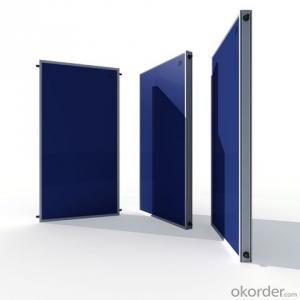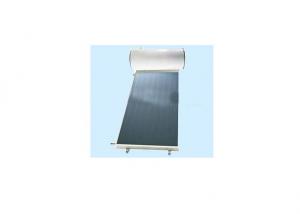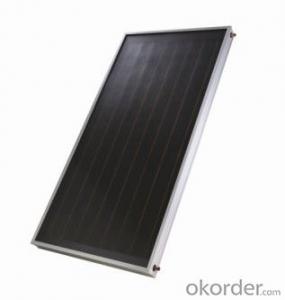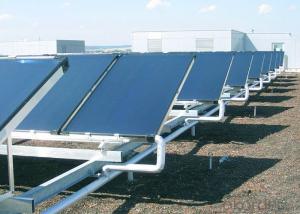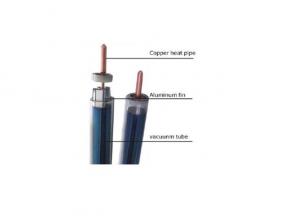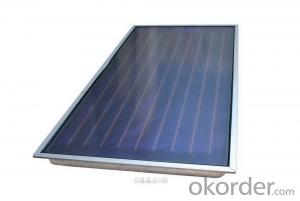10 Tubes Solar Pipes Solar Collectors EN12975
- Loading Port:
- China main port
- Payment Terms:
- TT OR LC
- Min Order Qty:
- 5 set
- Supply Capability:
- 10000 set/month
OKorder Service Pledge
OKorder Financial Service
You Might Also Like
Specification
manifold (inner) | red copper |
manifold (exterior) | aluminum alloy |
glass tube dimensions | 58mm * 1800mm |
daily efficiency | ≥55% |
heat preservation | 72 hours |
hail resistance | 25mm |
max pressure | 7 bar |
coating of vacuum tube | ALN/AIN-SS/CU |
heat pipe | anti-freezing > -35 degree |
certificate | Solar Keymark, EN12975,SRCC |
Serious Product
Models | L*W*H mm | Vacuum tube | Power output | Efficiency | Header mm | Frame | container loading 20FT/40HQ sets | Gross Weight kg |
SHC-8 | 1917*910*133 | 58*1800*8pcs | 939W | 0.668 | Φ35/1.0 | AL alloy | 185/445 | 27 |
SHC-10 | 1917*1130*133 | 58*1800*10pcs | 1189W | 159/385 | 33 | |||
SHC-12 | 1917*1350*133 | 58*1800*12pcs | 1440W | 149/358 | 40 | |||
SHC-15 | 1917*1680*133 | 58*1800*15pcs | 1815W | 120/290 | 49 | |||
SHC-18 | 1917*2010*133 | 58*1800*18pcs | 2191W | 100/242 | 59 | |||
SHC-20 | 1917*2230*133 | 58*1800*20pcs | 2442W | 87/210 | 66 | |||
SHC-22 | 1917*2450*133 | 58*1800*22pcs | 2692W | 83/202 | 72 | |||
SHC-24 | 1917*2670*133 | 58*1800*24pcs | 2943W | 77/188 | 79 |
Packaging & Delivery
Packaging Details: | Exporting Carton with big foaming protection |
Delivery Detail: | In 10-15 days |
Loading Quantity
Model | Tube | Tube Q.T.Y | Loading Q.T.Y/40HQ |
GSC15 | 58*1800mm | 15pcs | 315sets |
GSC18 | 58*1800mm | 18pcs | 265sets |
GSC20 | 58*1800mm | 20pcs | 248sets |
GSC22 | 58*1800mm | 22pcs | 225sets |
GSC25 | 58*1800mm | 25pcs | 200sets |
GSC30 | 58*1800mm | 30pcs | 168sets |
Details of solar collector:
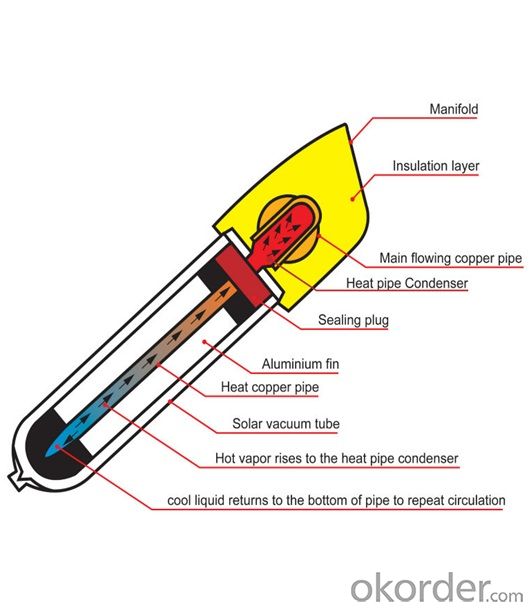

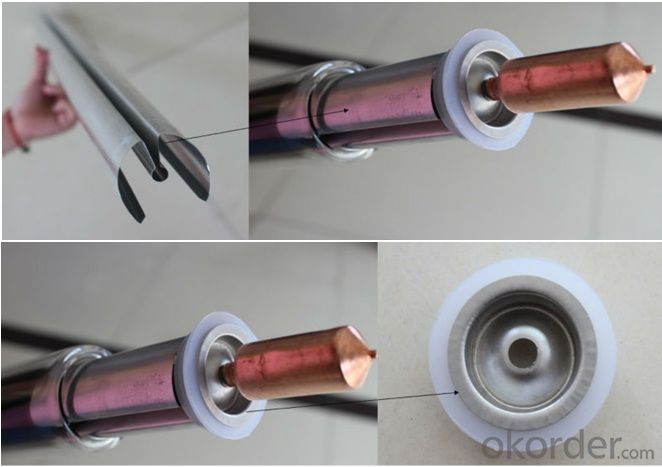
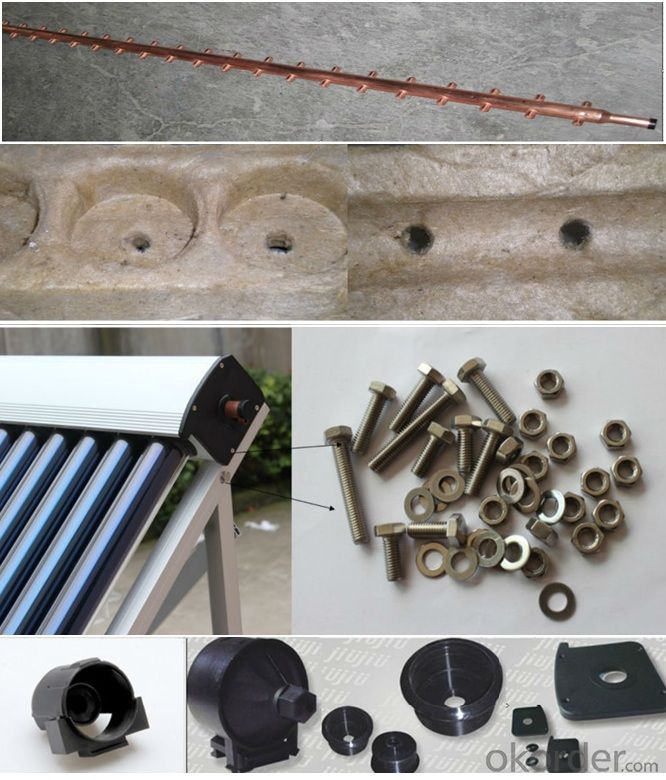
- Q:Can solar collectors be used for heating agricultural buildings?
- Yes, solar collectors can be used for heating agricultural buildings. By harnessing the sun's energy, solar collectors can provide a sustainable and cost-effective heating solution for agricultural structures such as barns, greenhouses, and livestock shelters. This helps to reduce reliance on fossil fuels and lower energy expenses for farmers while providing a comfortable and eco-friendly environment for their agricultural activities.
- Q:Can solar collectors be used for generating electricity on military bases?
- Yes, solar collectors can be used for generating electricity on military bases. Solar energy is a sustainable and renewable source of power that can be harnessed through photovoltaic panels to generate electricity. Implementing solar collectors on military bases can help reduce dependency on traditional fossil fuels, enhance energy security, and contribute to environmental sustainability.
- Q:Can solar collectors be used for heating grain storage facilities?
- Yes, solar collectors can be used for heating grain storage facilities. Solar thermal technology can capture and convert solar energy into heat, which can then be used to warm the air or water inside the storage facility. This can help maintain optimal temperature and humidity levels, preventing spoilage and preserving the quality of the stored grain. Additionally, using solar energy for heating can reduce reliance on fossil fuels and lower operational costs for grain storage facilities.
- Q:Can solar collectors be used for desalination?
- Yes, solar collectors can be used for desalination. Solar thermal desalination systems use sunlight to heat water, producing steam that is then condensed to create fresh water. This process is efficient and environmentally friendly, making solar collectors a viable option for desalination projects.
- Q:How do solar collectors impact job creation?
- Job creation in various sectors of the economy is significantly influenced by solar collectors. Skilled workers are required for the installation and maintenance of solar collectors, which in turn creates job opportunities for engineers, technicians, and construction workers. These professionals are responsible for designing, installing, and repairing solar panels, directly contributing to job creation in the renewable energy industry. Employment opportunities are also generated through the production and manufacturing of solar collectors. Specialized factories produce the various components of solar panels, resulting in job creation for workers involved in manufacturing solar cells, frames, inverters, and other necessary components. Sales and marketing sectors also experience job creation due to the increased demand for solar collectors. As more individuals and businesses opt for solar panels, the need for sales representatives and marketers arises to educate and promote the benefits of solar energy. These professionals play a crucial role in expanding the adoption of solar collectors, leading to more job opportunities. Furthermore, the growth of solar collectors indirectly creates employment in related industries. For instance, the installation of solar collectors often requires electrical work, necessitating the expertise of electricians. This leads to additional employment opportunities for electricians who can connect the solar panels to the electrical grid. Additionally, as the solar industry continues to expand, research and development activities become essential. This results in job creation for scientists, engineers, and researchers focused on enhancing the efficiency and effectiveness of solar collectors. Overall, solar collectors have a positive impact on job creation by providing employment opportunities in the renewable energy industry, manufacturing sector, sales and marketing, as well as indirect job creation in related fields. With the world shifting towards sustainable energy sources, the demand for solar collectors will continue to grow, contributing to further job creation.
- Q:Are there any drawbacks to using solar collectors?
- Yes, there are a few drawbacks to using solar collectors. Firstly, solar collectors are dependent on sunlight, so they may not be as efficient in areas with limited sunshine or during cloudy days. Secondly, the initial installation cost of solar collectors can be high, although the long-term savings on energy bills can offset this. Additionally, solar collectors require a significant amount of space for installation, which may not be feasible for all properties. Lastly, the production and disposal of solar panels can have some environmental impacts, although they are generally considered much less harmful than traditional energy sources.
- Q:Can solar collectors be used in combination with wastewater treatment systems?
- Yes, solar collectors can be used in combination with wastewater treatment systems. Solar collectors, also known as solar panels or solar thermal systems, are designed to convert sunlight into usable heat energy. This heat energy can be used in various applications, including heating water for wastewater treatment systems. Wastewater treatment systems typically require a significant amount of energy to operate, especially for processes such as heating water, aeration, and pumping. By integrating solar collectors into these systems, the thermal energy generated by the sun can be harnessed to meet some of the energy needs of the wastewater treatment process. Solar collectors can be used to heat water that is required for various stages of the treatment process. For example, in the primary treatment stage, solar collectors can heat the incoming wastewater, helping to break down organic matter and facilitate the separation of solids. In the secondary treatment stage, solar thermal systems can provide the energy needed for aeration, which promotes the growth of beneficial bacteria that break down pollutants in the wastewater. Additionally, solar collectors can be used to generate electricity, which can power the pumps and other equipment used in wastewater treatment systems. This helps to reduce reliance on grid electricity and can contribute to lower operational costs and environmental impact. Overall, integrating solar collectors with wastewater treatment systems offers a sustainable and renewable energy solution. It can help reduce the carbon footprint of the treatment process, lower operational costs, and increase the overall efficiency of the system.
- Q:The characteristics of flat solar collectors
- Flat solar water heater advantages: First, particularly suitable for integration with the building requirements. Flat solar water heater because of its structural characteristics of the plane, in the integration of solar energy applications, the shape of flexible structure, the design is not subject to the shape or size of the constraints,
- Q:Can solar collectors be used for heating prisons?
- Yes, solar collectors can be used for heating prisons. Solar thermal systems can be installed on prison roofs or in nearby open areas to capture sunlight and convert it into heat energy. This heat can then be used for space heating in prison buildings, providing a sustainable and cost-effective solution.
- Q:Can solar collectors be used for sterilizing medical equipment?
- Sterilizing medical equipment using solar collectors is possible. These collectors absorb sunlight and convert it into thermal energy to generate heat. This heat can then be used for sterilization purposes. For instance, solar autoclaves utilize solar collectors to heat water or generate steam, which can effectively sterilize medical equipment. The use of solar-based sterilization methods proves particularly beneficial in regions with limited access to electricity or an unreliable power supply. By harnessing the sun's power, solar collectors present a sustainable and cost-effective solution for sterilizing medical equipment in such areas. Moreover, solar-based sterilization techniques are environmentally friendly as they do not rely on fossil fuels or emit harmful substances. This makes them an appealing choice for promoting sustainable healthcare practices and reducing the carbon footprint associated with sterilization procedures. However, it is crucial to acknowledge that relying solely on solar collectors may not guarantee complete sterilization of all medical equipment. While they can provide the necessary heat, other factors like proper cleaning, packaging, and maintenance of sterility must also be accounted for. Additionally, the size and capacity of the solar collectors need to be appropriately designed to meet the specific sterilization requirements of the medical facility. In conclusion, solar collectors offer a sustainable and cost-effective alternative to traditional methods of sterilizing medical equipment, particularly in areas with limited access to electricity. Nevertheless, careful consideration and integration of other sterilization practices are essential to ensure the utmost level of sterility and safety.
1. Manufacturer Overview |
|
|---|---|
| Location | |
| Year Established | |
| Annual Output Value | |
| Main Markets | |
| Company Certifications | |
2. Manufacturer Certificates |
|
|---|---|
| a) Certification Name | |
| Range | |
| Reference | |
| Validity Period | |
3. Manufacturer Capability |
|
|---|---|
| a)Trade Capacity | |
| Nearest Port | |
| Export Percentage | |
| No.of Employees in Trade Department | |
| Language Spoken: | |
| b)Factory Information | |
| Factory Size: | |
| No. of Production Lines | |
| Contract Manufacturing | |
| Product Price Range | |
Send your message to us
10 Tubes Solar Pipes Solar Collectors EN12975
- Loading Port:
- China main port
- Payment Terms:
- TT OR LC
- Min Order Qty:
- 5 set
- Supply Capability:
- 10000 set/month
OKorder Service Pledge
OKorder Financial Service
Similar products
New products
Hot products
Hot Searches
Related keywords













